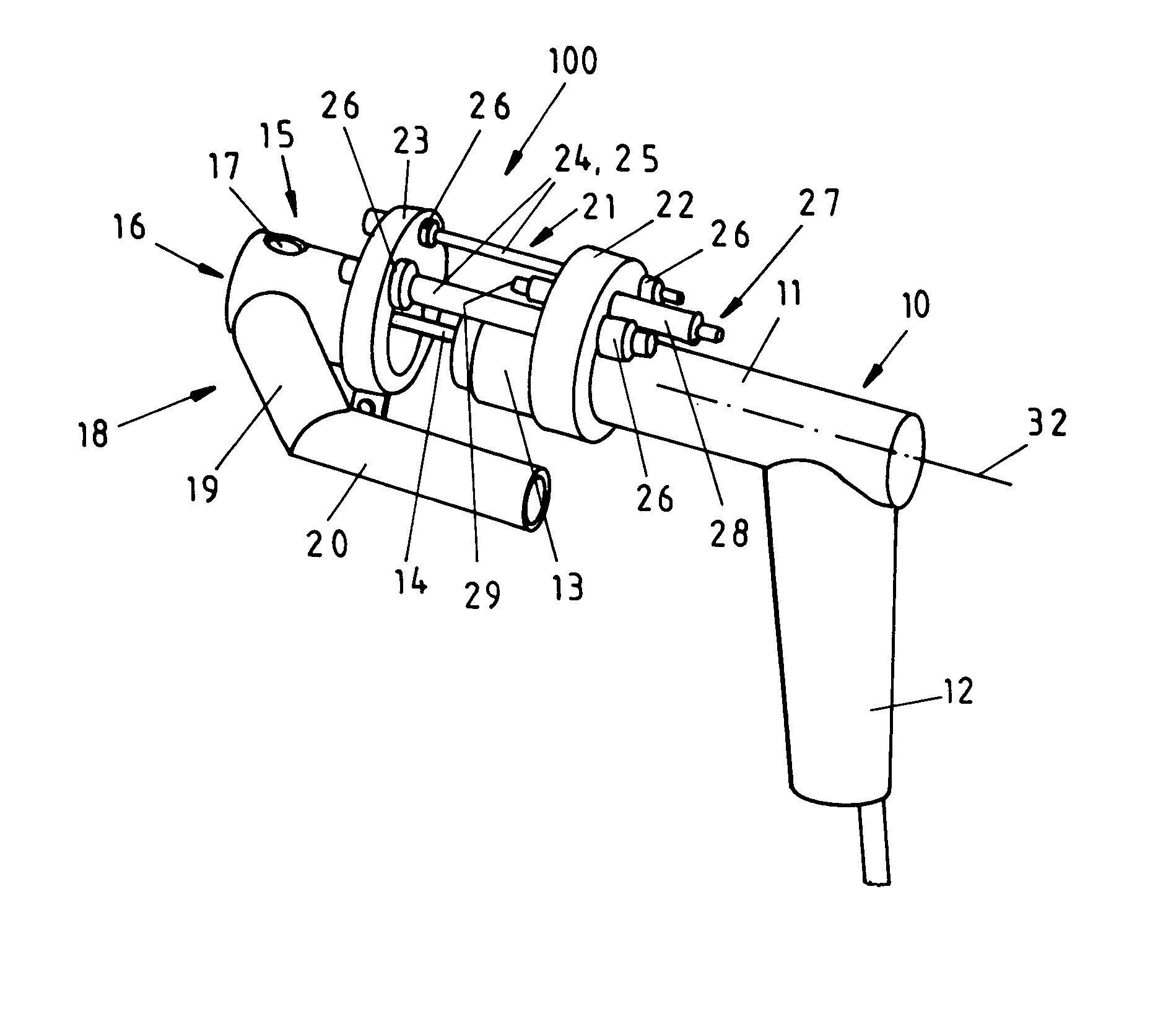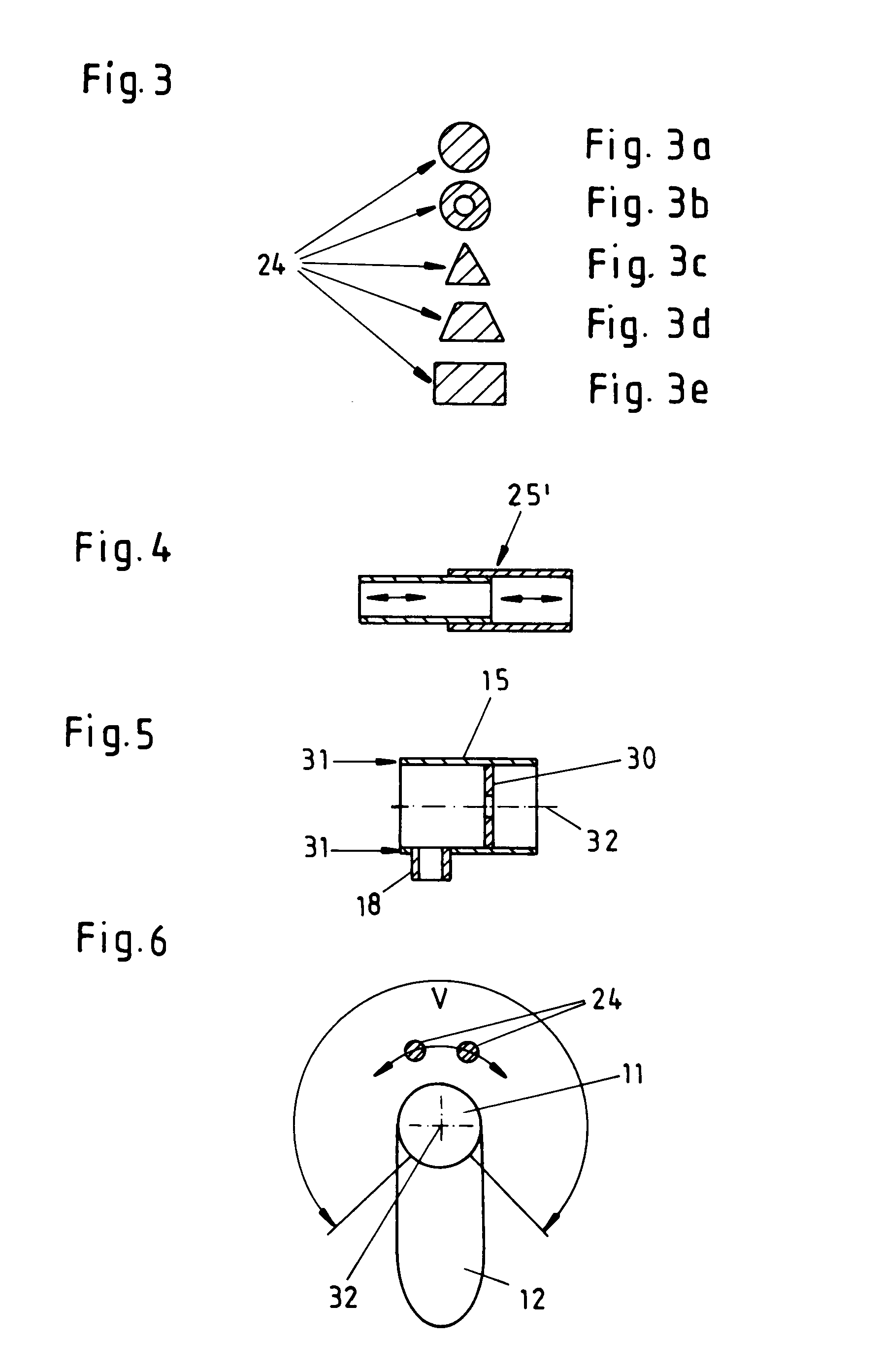Drilling device
a drilling device and drilling technology, applied in the direction of portability drilling machines, turning machine accessories, manufacturing tools, etc., can solve the problems of high consumption costs, need for a tool with a threaded shaft, and so as to reduce the risk of tool tilting, and ensure the effect of safety
- Summary
- Abstract
- Description
- Claims
- Application Information
AI Technical Summary
Benefits of technology
Problems solved by technology
Method used
Image
Examples
Embodiment Construction
[0059]FIGS. 1 and 2 show an example of embodiment of a device 100, which is arranged on a drilling machine 10. This is a drilling machine 10 known per se for manual drilling, which in the usual way has a casing 11, a grip 12 and a tool chuck 13 for a tool 14.
[0060]Device 100 consists of a workpiece jigging device 15, with a contact surface 16, which can have contact feet not shown in FIGS. 1 and 2. An opening 17 is made in workpiece jigging device 15 in order to be able to see the action point of tool 14. Also arranged on workpiece jigging device 15 is suction-type extraction device 18, which enables material chips, dusts and impurities to be conveyed via suction pipe 19 out of the area of the workpiece jigging device, or more precisely the machining or action point. For this purpose, suction pipe 19 is provided with a connection piece 20, to which a tube (not shown) can be connected. In the form of embodiment shown in FIGS. 1 and 2, connection piece 20 is led parallel to the machin...
PUM
| Property | Measurement | Unit |
|---|---|---|
| displacement | aaaaa | aaaaa |
| area | aaaaa | aaaaa |
| depth | aaaaa | aaaaa |
Abstract
Description
Claims
Application Information
 Login to view more
Login to view more - R&D Engineer
- R&D Manager
- IP Professional
- Industry Leading Data Capabilities
- Powerful AI technology
- Patent DNA Extraction
Browse by: Latest US Patents, China's latest patents, Technical Efficacy Thesaurus, Application Domain, Technology Topic.
© 2024 PatSnap. All rights reserved.Legal|Privacy policy|Modern Slavery Act Transparency Statement|Sitemap



